Europe
Asia Pacific
North America
South America
Middle East
South Africa
Summary of the ocean freight market update in May
Port congestion is worsening at key gateways in northern Europe and other hubs, according to a new report which suggests trade wars could spread maritime disruptions to Asia and the US and push up shipping rates. Rolf Habben Jansen, chief executive officer of Hamburg-based Hapag-Lloyd AG, said on a webinar that, although he’s seen recent signs of improvement at European ports, he expects it will take “another six to eight weeks before we have that under control.”
In response to a proposed additional 100% tariff on Chinese manufactured ship-to-shore (STS) by the Office of the United States Trade Representative (USTR) and the Trump Administration, the American Association of Port Authorities (AAPA) continues to fiercely advocate against it. AAPA President and CEO Cary Davis has testified in a hearing before USTR on behalf of the port industry alongside several other U.S. port stakeholders. Recently, AAPA also submitted extensive comments to USTR outlining the industry's candid thoughts on the proposed policy changes articulating strong opposition to additional tariffs on STS cranes.
The European Union has agreed to fast-track trade talks with the US in a bid to avoid President Trump's 50% tariffs — which, in an about-face, he announced would be delayed until 9 July.
Drewry’s World Container Index (WCI) increased another two per cent for the week of 19-23 May and is now US$2,276 per 40-ft container.
“Fear and uncertainty is a powerful force in global supply chains and we are seeing this clearly as shippers fight to get their goods moving after the temporary lowering of US-China tariffs – and they are willing to pay higher rates to do so. Carriers are pushing for big spot rates increases on trades from China to US on 1 June and shippers are once again being offered ‘Diamond Tier’ services to guarantee space on ships. How successful carriers are in getting these rates will be determined by how much shippers are willing to push back”. - Peter Sand, Xeneta Chief Analyst.
Energy Price - May 2025
20 April 2025 = USD63.08
20 May 2025 = USD65.38
OPEC+ is likely to agree to a further accelerated oil output hike for July this week, three delegates from the group told Reuters, in the latest stage of a plan to meet rising demand and increase market share. When the 22-member group meets on Wednesday to review the market, it is not expected to change policy, the sources said (Reuters).
Demand for sustainable fuels is set to expand by 35% by 2030 based on today’s policies and market conditions. However, many sustainable fuels are not on track to meet long-term global emissions reduction goals (IEA).
Sustainable aviation fuel (SAF) production is growing in the United States as new capacity comes online. U.S. production of Other Biofuels, the category we use to capture SAF in our Petroleum Supply Monthly, approximately doubled from December 2024 to February 2025. SAF is an alternative to petroleum jet fuel. It’s produced from agricultural and waste feedstocks and is consumed in blends with petroleum jet fuel. Investments in SAF have increased because of the U.S. Environmental Protection Agency’s Renewable Fuel Standard (RFS), federal tax credits, and state programs and tax credits incentivizing use of the fuel (USEIA).
Global electricity generation from solar farms is set to exceed output from nuclear reactors for the first time this summer, Reuters reports. On an annual basis, the output from solar energy is behind that of wind, nuclear and hydropower systems because solar farms only generate power during daylight (WEF).
The trajectory of global liquefied natural gas (LNG) demand is now marked by “deep uncertainty,” according to the president of the International Group of Liquefied Natural Gas Importers (GIIGNL), signaling a more cautious tone from one of the industry’s most influential voices (OILPRICE.COM).
Japan is likely to sweeten terms for developers to build a massive offshore wind farm sector, industry insiders say, as it looks to put its energy ambitions back on track against a worldwide slump of projects hit by soaring costs and delays. The government aims to have 45 gigawatts of offshore wind capacity by 2040, which is essential to cutting the country's dependence on imported coal and gas for power generation, reducing its carbon emissions and bolstering national security (Reuters).
Ocean freight trends - Europe
The European ocean freight market in May 2025 remains complex, marked by uncertain demand, evolving capacity, and ongoing geopolitical influences. While some pressure has eased, emerging challenges demand continued agility in supply chain planning. Significant improvements from the newly formed alliances pre-Q4 remain unlikely.
- Demand: Soft consumer demand and cautious inventory management in Europe.
- Disruptions: Cape rerouting absorbs 8–10% of fleet capacity; Suez reopening uncertain.
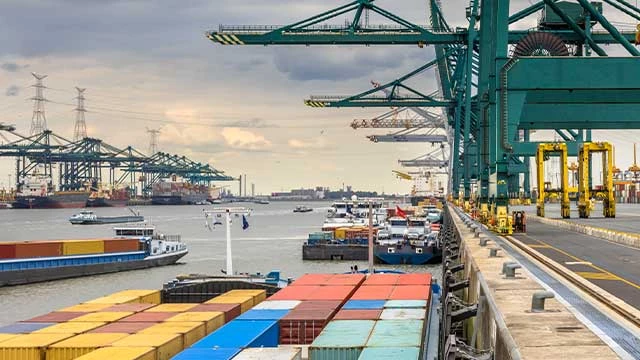
- Exports: Sector-specific resilience, but overall growth slowed by geopolitics and weak EU industry.
- Equipment: Generally stable, with some regional imbalances; low backhaul rates aid repositioning.
- Policy: EU regulations (e.g. CBAM) and global trade shifts shape export strategies.
Main Reasons for Bottlenecks
- Congestion at major European hubs remains a key issue. There are signs indicate congestion may worsen.
- Digitalization and automation help, but not enough alone.
- Dwell time issues persist due to Labor instability, Weak hinterland infrastructure, Poor supply chain coordination
Impact on Freight Rates
- Volatile but Stabilizing: Contract rates from Asia to Northern Europe are down from peak levels, while spot markets remain volatile. Spot rates are nearing contract levels, with transpacific hikes likely to influence Asia-Europe pricing.
- Carrier Capacity Moves: MSC's announced FAK rates for June 2025 signal active capacity management.
- Transatlantic Trends: Early May saw rate declines on both eastbound and westbound lanes. However, carriers have announced higher rates for June, indicating a potential reversal.
Outlook
- Market shows signs of relatively stable.
- Extreme disruptions have eased.
- Overcapacity and new vessel deliveries persist.
- Ongoing network adjustments keep conditions fluid.
- Strategic planning and adaptability remain crucial.
Ocean freight trends - Asia Pacific
- Temporary tariff truce between US and China (90 days) boosts container demand.
- Surge in bookings from China to US due to reduced tariffs (e.g., Yantian port sees 277% increase).
- Ongoing Red Sea crisis and rerouting continue to disrupt flows.
- Ports like Singapore and Port Klang under pressure from rising volumes and adjusted trade lanes.
Main Reasons for Bottlenecks
- Port Congestion at key hubs (Shenzhen, Singapore, Port Klang) due to increased cargo volumes, route diversions and longer vessel waiting and terminal handling times
- Blank Sailings & Capacity Gaps: Carriers previously reduced sailings anticipating low demand. Reinstating capacity now lags behind sudden demand spike. Mismatches in container and sailing availability
- Transshipment Delays: Strain on hub ports affects intra-Asia and Asia-Europe flows.

Impact on Freight Rates
- Rising rates from China to US, especially for 40’DC and 40’HC containers.
- Carriers impose General Rate Increases (GRIs) and Peak Season Surcharges (PSS).
- Container position charges increase due to repositioning needs.
- Rates for intra-Asia and Asia-Europe remain moderately firm due to equipment balancing and delays.
Outlook
- Expect elevated freight rates and premium surcharges through July during the truce window.
- Potential sharp drop in demand and rates if tariffs return post-truce.
- Ongoing volatility tied to trade policy, port congestion, capacity management, and geopolitics.
- Shippers urged to stay agile and monitor developments closely to navigate Q2 and beyond.
Ocean freight trends - North America
- Port of Los Angeles import volumes down 30% in early May; 17 of 80 vessel calls canceled.
- China-to-U.S. bookings surged after May 14 tariff truce, prioritizing long-term contracts.
- Spot rates China to U.S. West Coast up 8%, reaching around USD 2,805 per 40-ft container.
Main Reasons for Bottlenecks
- Tariff uncertainty due to steep, then temporarily reduced, U.S.-China tariffs.
- Surge in shipments causing port congestion in China and Europe.
- Additional proposed U.S. tariffs on ship cranes increase industry uncertainty.
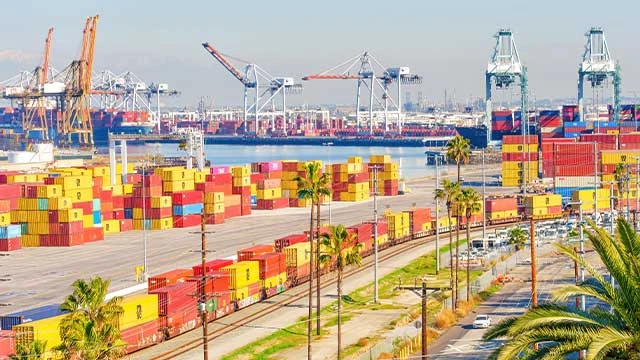
Impact on Freight Rates
- Freight rates from Shanghai to key ports rose 2-4%.
- Drewry’s Container Index up 2% to USD 2,276 per container.
- Carriers pushing for higher spot rates, shippers facing rising costs.
Outlook
- Maersk forecasts 1% contraction to 4% growth in 2025 due to geopolitical risks.
- Trade war mainly affects U.S.-China; global trade largely steady.
- Energy sector sees rising oil output, growth in sustainable fuels and renewables.
Ocean freight trends - South America
At the end of May 2025 the Brazilian Government announced an increase in the rate of the Financial Transactions Tax (IOF – Imposto sobre Operações Financeiras) which previously had a rate of 0,38% will now be subject to a rate of 3,5%. Therefore, all foreign exchange agreements will be increased by 3,12% with immediate effect.
China's Guangzhou Port, the largest shipping hub in the country's south, opened a direct route to Chancay Port in Peru. Located north of Lima, Chancay recently began operations with non-stop voyages to and from Asia, accommodating the largest vessels on the SAM Pacific coast.
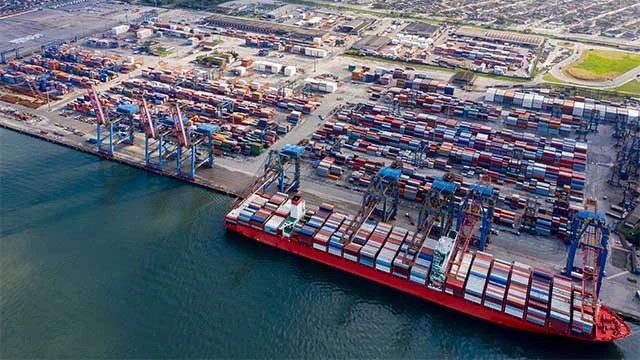
The announcement comes as Beijing aims to further strengthen its relationship with resource rich Latin America amid trade tensions with the United States. The direct route reaches Peru in about 30 days and reduces logistics costs by around 20%.
Main Reasons for Bottlenecks
- Continued Infrastructure Challenges: Despite efforts to improve, many ports and transport systems may still be inadequate to handle increasing cargo volumes, leading to congestion.
- Economic Factors: Fluctuations in the global economy, including inflation and changes in trade policies, could impact shipping costs and demand, contributing to bottlenecks.
Impact on Freight Rates
- MSC - Mediterranean Shipping Lines, informed local charges adjustment export in Brazilian Ports as from 22 June 2025 (MSC) for the charges as per below:
- VMI – VGM Misdeclaration/Export
- VLS – VGM Late Submission/Export
Outlook
Overall, the South American shipping market in June 2025 is expected to be a mixed bag. While demand is expected to be steady, the potential for overcapacity, evolving trade dynamics, and infrastructural challenges could create volatility in freight rates and impact schedule reliability.
Ocean freight trends - Middle East
- Rate erosion continues.
- Space and Equipment availability improved.
- +520 Days after Red Sea Crisis has started and no sight of normalcy with shipping through Red Sea.
- Jebel Ali congestion easing slightly.
Main Reasons for Bottlenecks
- Carriers are implementing blank sailings and adjusting schedules to manage reduced demand and mitigate risks associated with the Red Sea route.
- Dammam experiencing 3-day delays. Cargo meant for Jeddah redirected via Dammam.
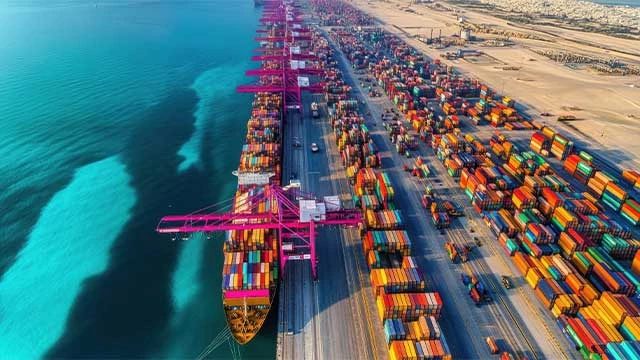
Impact on Freight Rates
- Freight rates from China to the Middle East have decreased by approximately 100 USD – 200 USD per 40-foot high-cube container (40HC) in recent months. For instance, rates to Jebel Ali, range between 1,300 USD and 1,650 USD per 40HC.
- Carriers have started restricting booking from Middle east into South East Asia in an attempt to reduce the number of containers flooding into Transhipment ports in that area.
Outlook
- Overall downward rate slide to continue.
- Expect carriers to increase port omissions to consolidate cargo and push rates upwards.
Ocean freight trends - South Africa
- Container handling improved to 12,124 TEUs/day (↑23% from previous week).
- Global container volumes surged in March (↑22% m/m; ↑6.5% y/y), driven by post–Chinese New Year demand.
- Trans-Pacific bookings and freight rates spiked due to the US-China tariff truce.
- Air cargo saw outbound growth from ORTIA (↑17%), now slightly ahead of 2024 levels.
- Rail cargo to Maputo rose to nine trains/day; sugar trains from Eswatini remained stable.
- Global shipping market remains volatile with tightening charter markets and structural imbalances.
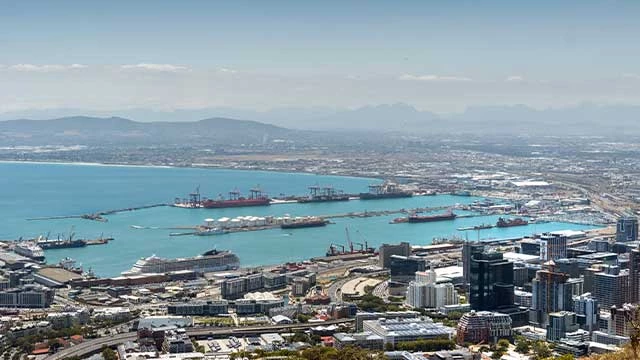
Main Reasons for Bottlenecks
- Port operational issues: Equipment breakdowns and shortages (especially Cape Town and Durban). Adverse weather conditions across several ports. Vacant berths and system issues in Eastern Cape. Marine equipment delays at Richards Bay.
- Rail disruptions: Ongoing cable theft (e.g., Capital Park) leading to costly diesel hauling. Substation outage (Danskraal) shut down NATCOR temporarily.
- Labour unrest: Potential strike action by UNTU over wage negotiations with Transnet.
- Border delays: Increased crossing and queuing times across SA-SADC borders (e.g., Kasumbalesa avg. ~2 days). Infrastructure challenges on corridors like the N4.
Impact on Freight Rates
- Freight rates increasing on trans-Pacific routes due to tariff relief and booking surge.
- Charter market tightening as carriers reposition vessels and expand fleets.
- Local inefficiencies may result in higher logistics costs for shippers (delays, rerouting, diesel costs).
Outlook
- Short-term improvements expected with new RTGs at Durban Pier 1 and Bayhead Road upgrades in June.
- Uncertainty remains due to: Labour negotiations; infrastructure fragility (e.g., energy supply, security); ongoing global economic and geopolitical pressures.
- Long-term recovery depends on: collective action across the logistics value chain; corridor integration and investment; data-led performance management and accountability.
Customer advice
Considering the ever-changing market conditions and forces, please:
- Let's closely monitor the developments in the US trade policy and the impending world events to maneuver potential challenges effectively in the logistics industry.
- Think ahead and book well in advance. Try to plan for 6 months ++.
- Consider that the market can change significantly. Further disruptions can happen anytime.
- Identify contract options that enable flexibility and resilience for your business.
However, it is our job at Bertling to keep global supply moving and do all we can and apply our knowledge, network and expertise to protect our clients’ while taking the latest market developments into account. We are there to find the best solutions to ensure cargo flows.



